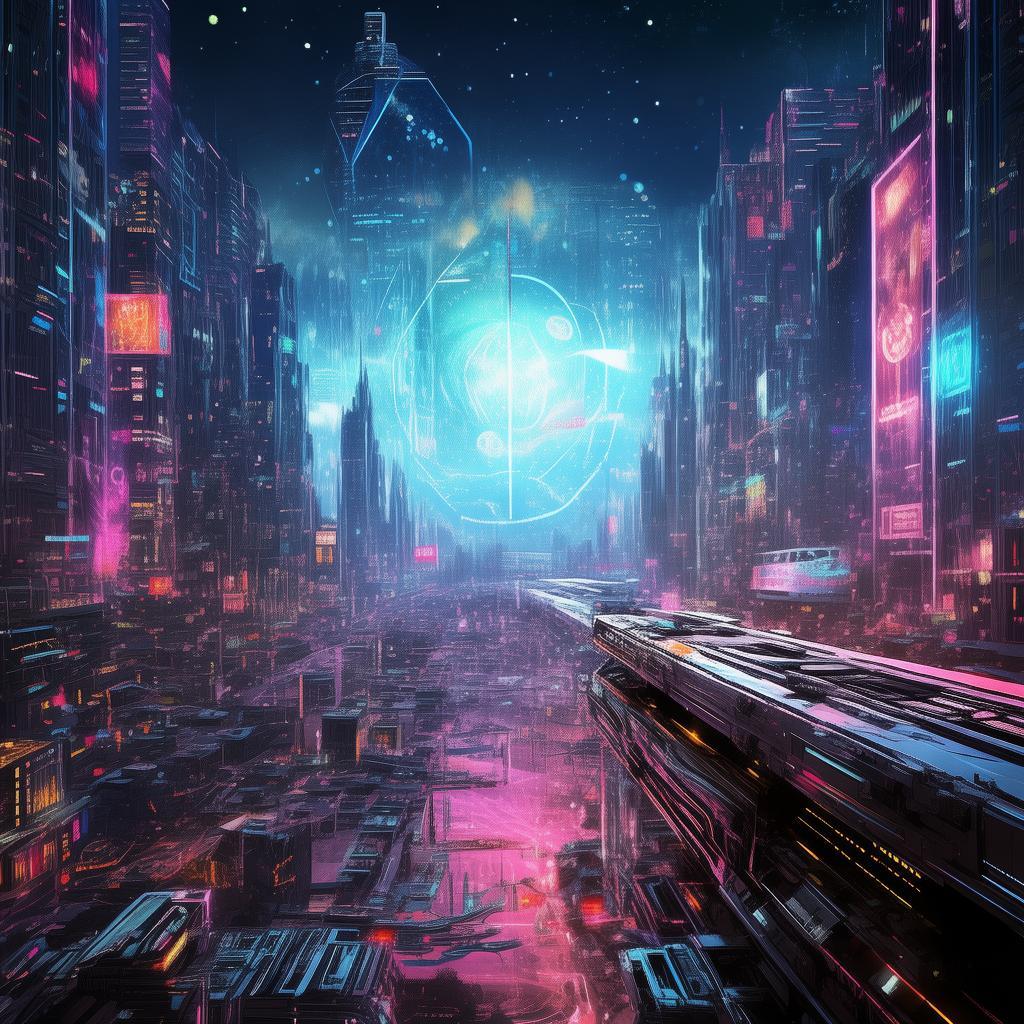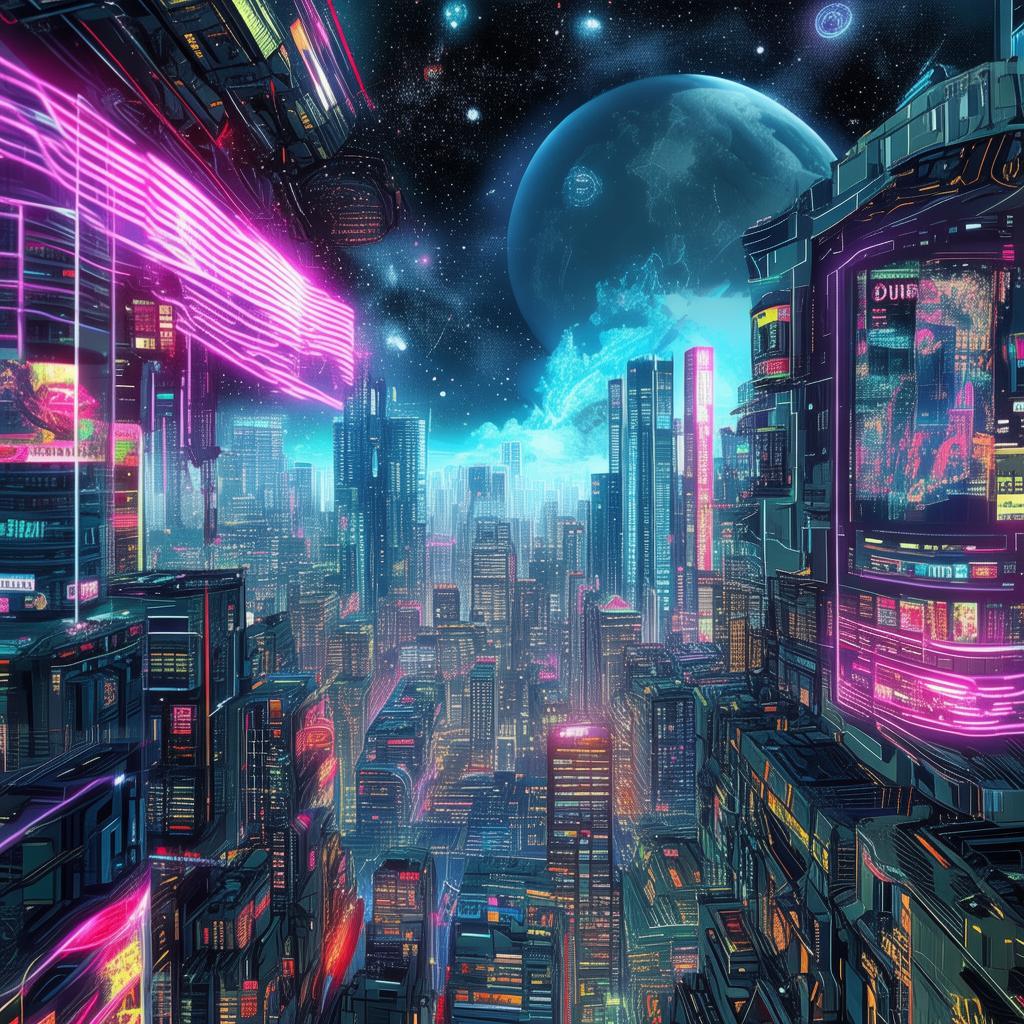The Last Canvas of Andara
In the year 2147, the Andara System, a network of space colonies orbiting the distant star Andara, was on the brink of collapse. The once-prosperous system was now a patchwork of rival factions, each vying for control over the dwindling resources. Amidst this chaos, the Andara Art Commission announced a competition: the creation of the "Last Canvas of Andara," a grand work of art to be painted by the chosen artist and displayed in the Central Nexus, the grand hub of the system.
Amara, a renowned artist known for her otherworldly landscapes and celestial themes, was selected for the honor. Her paintings had long been a beacon of hope in a world where hope was scarce. The Last Canvas was to be her magnum opus, a testament to the beauty and resilience of the Andara System.
As Amara prepared for her journey to the Central Nexus, she was haunted by her past. She had once been a child of the stars, raised in the lush gardens of Andara's first colony, but her parents had been among the first to perish in the system's decline. Amara's art was a way to keep their memory alive, a testament to the world they had once known.
The journey to the Central Nexus was fraught with peril. Amara's ship, the Celestial Quill, was equipped with advanced AI and a holographic studio that would allow her to paint directly onto the canvas, a colossal structure that had been constructed to accommodate her masterpiece. The ship's AI, named Elysium, was a constant companion, offering guidance and advice, but also a reminder of the isolation that Amara would face.
Upon arrival, Amara was greeted by the Art Commission's head, a figure known only as the Archivist. The Archivist explained that the Last Canvas was not just a work of art; it was a symbol of unity and hope for the future of Andara. The canvas itself was a living entity, capable of evolving and changing as Amara painted upon it.
As Amara began her work, she found herself drawn to the canvas's inherent energy. It seemed to speak to her, to call out for the memories of her parents and the beauty of the world they had left behind. But as she delved deeper into her painting, she discovered that the canvas was not just a surface; it was a portal to the past, a window into the history of Andara.

Through the canvas, Amara witnessed the rise and fall of the system, the triumphs and tragedies of its people. She saw the colonists' struggle to survive, their triumphs in the face of adversity, and the ultimate betrayal that had led to the system's current state. The canvas became a reflection of her own soul, a battle between the hope for a better future and the despair of a lost past.
The Art Commission was not the only ones watching Amara's progress. The rival factions were also aware of the significance of the Last Canvas and sought to control it for their own ends. They sent spies and agents to the Nexus, hoping to sway Amara's vision or even to steal the canvas itself.
Amara, however, was determined to paint the truth. She knew that the canvas was not just a work of art; it was a beacon of hope for the people of Andara. She had to show them that beauty could still exist in a world so torn apart by conflict and despair.
As the painting progressed, Amara's own life began to intertwine with the canvas. She found herself drawn to a young man named Kael, a member of the resistance who had been sent to the Nexus to sabotage Amara's work. Kael was a man of few words, but his actions spoke volumes. He was a symbol of the struggle for freedom, a reminder that hope could still be found in the darkest of times.
Amara and Kael's paths crossed repeatedly, each encounter bringing them closer together. Yet, they were both bound by their missions, and their loyalties were divided. Amara's mission was to paint the truth, while Kael's was to bring down the corrupt leaders of the system.
The climax of the story occurred when the rival factions launched a full-scale assault on the Nexus. Amara, Kael, and Elysium worked together to defend the canvas and the Nexus. In the heat of battle, Amara realized that the true power of the Last Canvas lay not in its beauty, but in its ability to bring people together.
In the end, Amara's painting was completed. The Last Canvas of Andara was a masterpiece, a reflection of the system's past, present, and future. It was a symbol of hope, a reminder that even in the darkest of times, beauty could still be found.
The Archivist unveiled the painting to the people of Andara, and it was met with a standing ovation. The people realized that the canvas was not just a work of art; it was a call to action, a reminder that they had the power to shape their own destiny.
Amara and Kael's relationship evolved beyond their initial loyalties. They both understood that the true strength of the Andara System lay in its people, and that together, they could overcome any obstacle.
The Last Canvas of Andara served as a catalyst for change, inspiring the people to rise up against the corrupt leaders and fight for a better future. Amara's painting became a legend, a symbol of hope and resilience that would be passed down through generations.
Amara, now a symbol of hope herself, continued to paint, her work a testament to the enduring spirit of the Andara System. And in the heart of the Central Nexus, the Last Canvas of Andara stood, a beacon of light in a world that needed it most.
✨ Original Statement ✨
All articles published on this website (including but not limited to text, images, videos, and other content) are original or authorized for reposting and are protected by relevant laws. Without the explicit written permission of this website, no individual or organization may copy, modify, repost, or use the content for commercial purposes.
If you need to quote or cooperate, please contact this site for authorization. We reserve the right to pursue legal responsibility for any unauthorized use.
Hereby declared.









